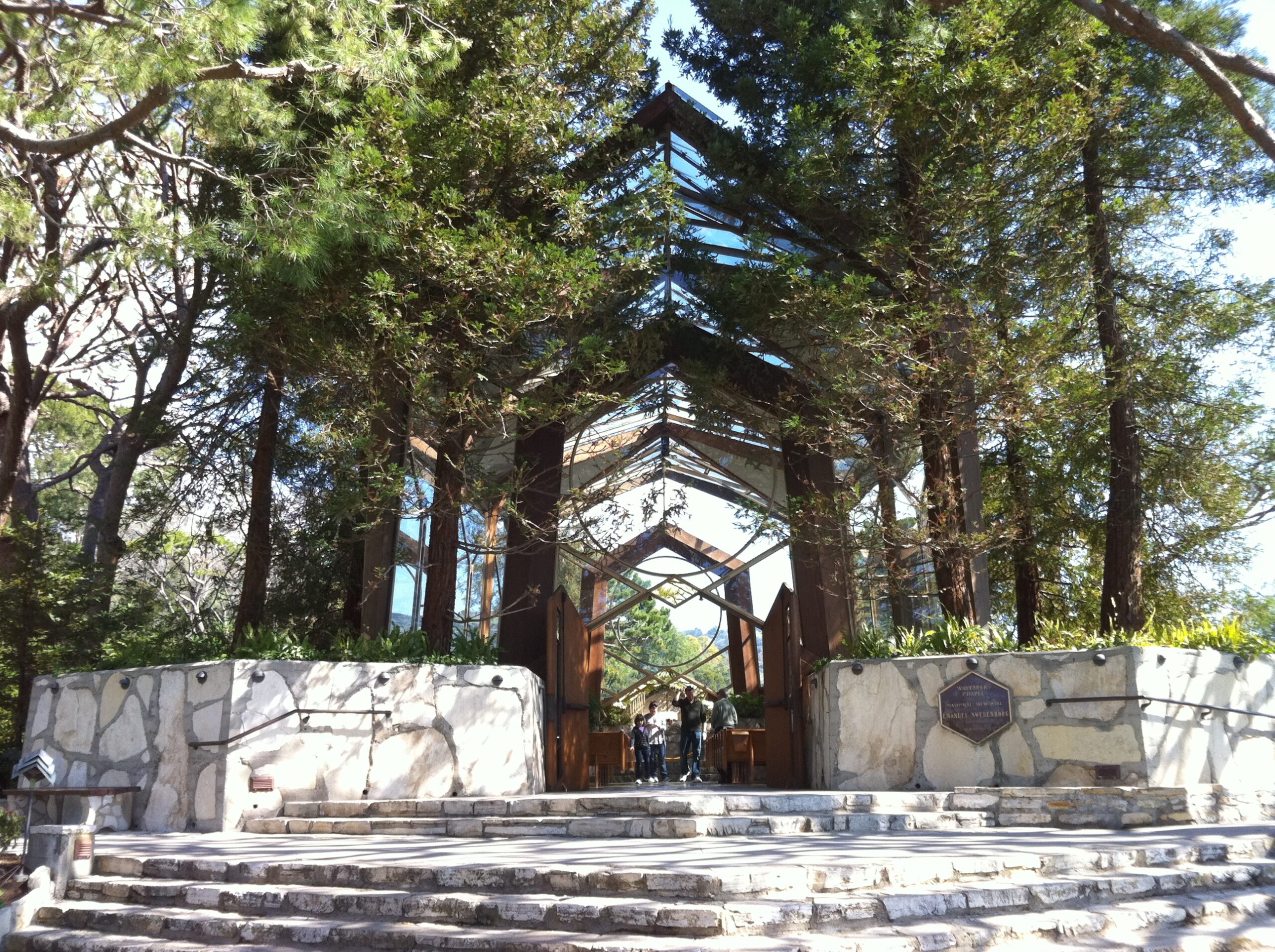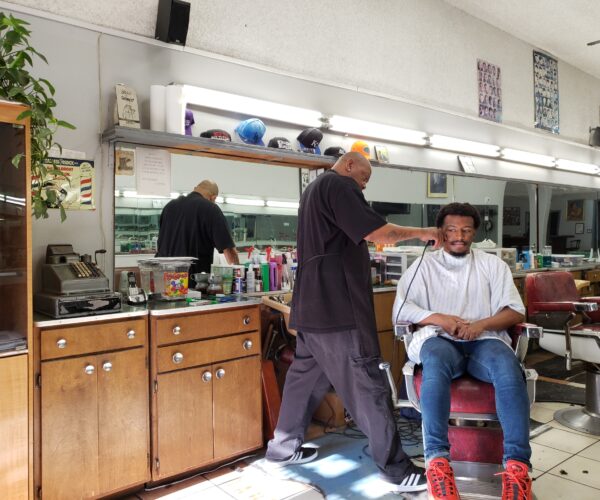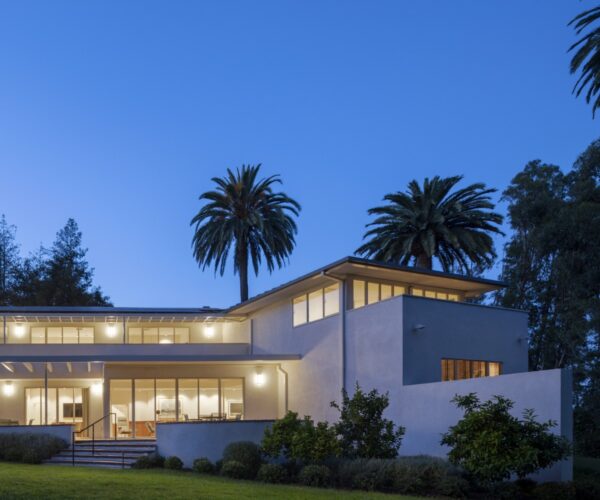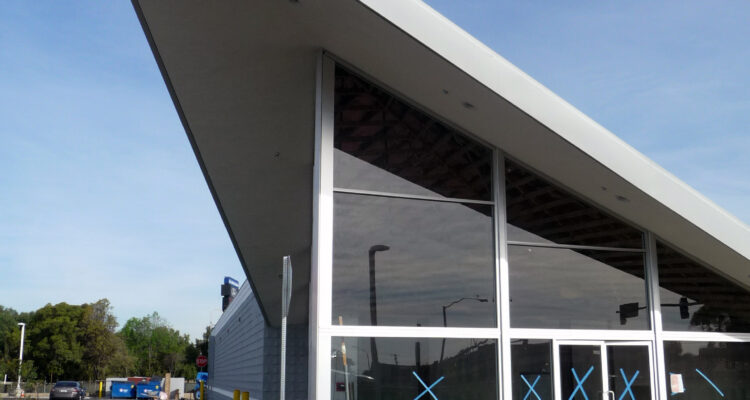
Place
Ray Vines Chrysler
With its complex “flying V” roofline, the Ray Vines Chrysler building at the corner of Willow Street and Lakewood Boulevard is unquestionably eye-catching.
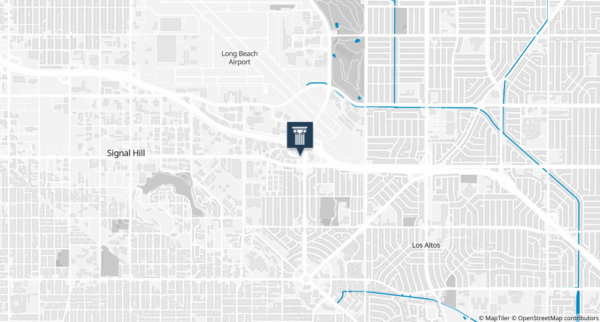
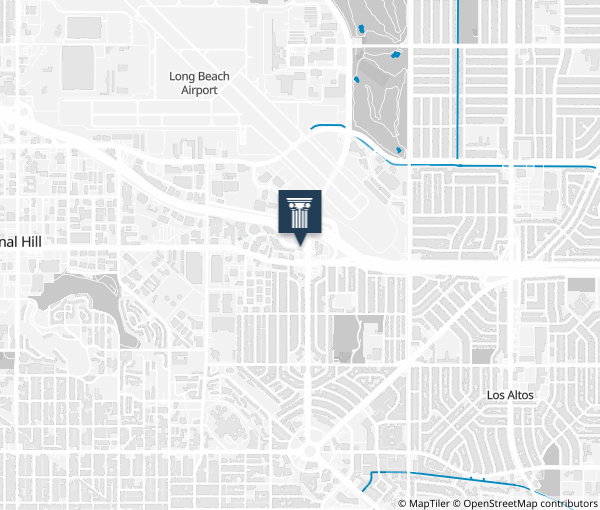
Place Details
Address
Get directions
Architect
Decade
Property Type
Community
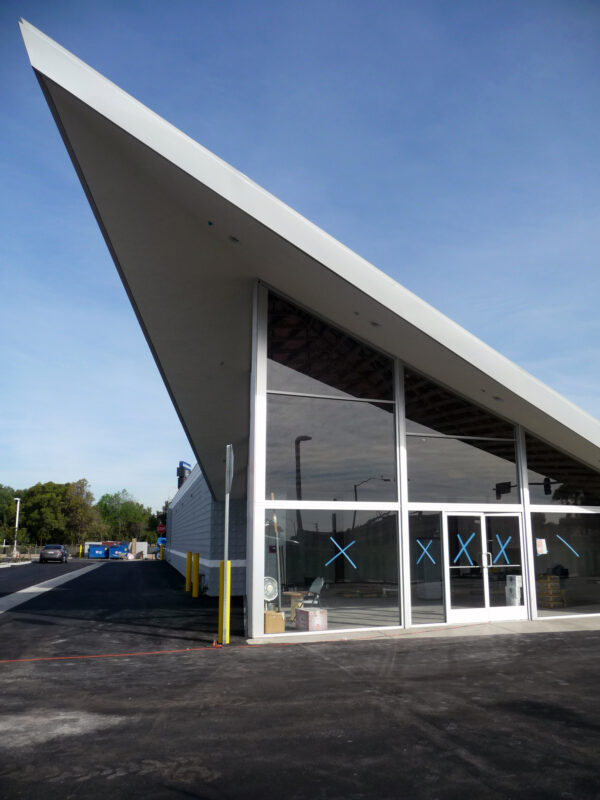
Photo courtesy Architectural Resources Group | Photo courtesy Architectural Resources Group
With its complex “flying V” roofline, the Ray Vines Chrysler building at the corner of Willow Street and Lakewood Boulevard is unquestionably eye-catching, which may explain why it was a successful car dealership for many years.
Completed in 1963, the dealership was not the first operated by Ray Vines, but it was the first for which he was able to choose the location, design, and layout. The building’s architect is not known. One rumor pegs Googie architect Paul B. Clayton, while a Long Beach Independent article stated dealership specialist Paul Iacono was the designer. Neither is listed on the building’s construction permit, which states only that the builder was J. W. Greig. The clue may lie in Las Vegas, where an identical building once housed Pete Findlay Oldsmobile.
Most of the Ray Vines building contains simple volumes with flat roofs and decorative concrete block in muted colors. Yet it is dominated by the exuberant Googie-style showroom, with its sharply angled roofline soaring skyward, anchored by a rough stone accent wall at the joining point of the two gables. The roof sheltered floor-to-ceiling display windows that beckoned homeward-bound Long Beach commuters to peek at the glistening cars inside.
Today, the Ray Vines building is undergoing a renovation into a car wash with retail occupants. The showroom’s glass has been replaced, the slender steel muntins have been replaced with wide white ones, the roof has been re-shingled, and the huge freestanding hexagonal sign that once marked the property has been removed. However, the Googie roofline remains to proudly mark one of the finest Modern property types: the 1960s car dealership.
